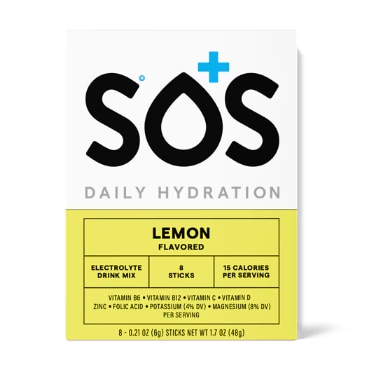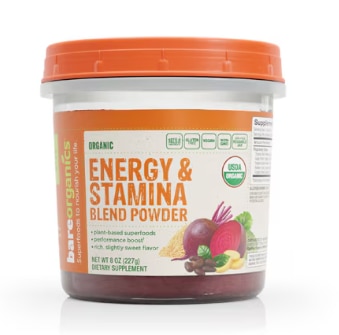You’ve set big fitness goals for yourself—and that’s amazing! The challenge is: life gets in the way sometimes. You get busy. Things come up. And the first thing to drop off your to-do list is your workout.
If you want to stick with it when you might otherwise ditch your goals or a week of workouts—you need to build healthy habits. These habits will keep you coming back to your fitness goals so you can make them a reality for yourself.
Here are seven essential healthy habits that can help you stay on track and achieve your fitness goals.
Healthy Habits to Support Fitness Success
1. Regularly come back to your “why”
When setting fitness goals, it’s easy to focus on the “what” and “how”—what you want to achieve and how you’re going to get there. However, understanding the “why” behind your fitness goals is equally, if not more, important. Here’s why having a strong “why” matters:
Provides purpose and direction
Having a clear reason for your fitness journey gives you a sense of purpose. It helps you understand what you’re truly striving for, whether it’s improving your health, boosting your self-esteem, or being a role model for your children. This sense of purpose keeps you focused and aligned with your goals.
Increases motivation
On days when you feel like skipping a workout or indulging in unhealthy habits, your “why” can be the motivation that pushes you to stay on track. It serves as a reminder of the bigger picture and helps you overcome temporary discomfort for long-term rewards.
Boosts accountability
When your “why” is deeply personal and meaningful, you’re more likely to hold yourself accountable. It becomes easier to stick to your plan because you’re not just exercising for superficial reasons; you’re doing it for something that truly matters to you.
Encourages long-term commitment
Short-term motivation can fade, but a strong “why” sustains your commitment over the long haul. It keeps you grounded and reminds you that fitness is a lifelong journey, not just a quick fix.
2. Prioritize sleep
Sleep is often overlooked but plays a crucial role in achieving fitness goals. Quality sleep supports muscle recovery, hormone regulation, and overall well-being. Aim for 7-9 hours of sleep each night and establish a bedtime routine to improve your sleep quality. Remember, rest is just as important as exercise in your fitness journey for a few key reasons:
- Recovery and repair of muscles
- Performance and reaction time
- Injury prevention
- Regulated hormones
- Reduced stress
Like with your workouts, you need a good sleep routine that encourages you to get into bed and rest when you know you should. Check out this guide, How to Build a Better Sleep Routine, for ideas and strategies.
3. Maintain a routine that works with your schedule
Consistency is the foundation of any successful fitness plan—but in order to maintain that, you need both a strong “why” (see the section above!) and you need a routine that actually works with your life. If you hate getting up early before work, you’re never going to stick with a workout routine that requires you to do that.
Instead, establish a routine that fits your schedule so you’ll want to stick with it. For example:
- After work, when traffic is worst—workout, and beat the traffic.
- Run or hit the gym at lunchtime
- If you work at home, schedule your workout for 2 or 3pm when you’d normally hit a slump
Get creative and find a time that works for you and that you look forward to.
4. Prepare healthy workout fuel ahead of time
The workout itself is one important aspect of fitness, but the other essential component is nutrition. In order to boost strength, endurance and muscle tone, you have to fuel your body with the proper nutrients before and after a workout.
To make this easier, prepare your pre- and post-workout fuel in advance. Instead of just a quick granola bar, which contains artificial sugar and processed additives, make healthy and portion-controlled snacks ahead of time. Look for healthy recipes that can be stored and eaten on-the-go with the perfect balance of protein and carbs.
5. Prioritize warm-up and cool-down stretches
After a long workout, the last thing you want to do is stretch, much less doing so before you get started—the goal is to get in and out. However, this part of your routine is crucial for activating the muscles before a workout and stimulating their recovery afterward.
A dynamic, low-impact stretch beforehand “primes the muscles to do their job more efficiently,” according to Aleisha Fetters, CSCS. She explains that this warms your muscles through chemical enzymes and oxygenated blood-flow, which produces the stamina needed for staying power and intensity. Make this a habit by setting aside five minutes for a brief warm-up walk on the treadmill. Better yet: walk or bike to the gym if you can.
The static cool-down is just as important because it lowers your heart rate back to normal, purges lactic acid from the body, and decreases the risk of a post-workout injury, says Jacqueline Crockford, ACE certified personal trainer. Make this part of your workout routine by avoiding these cool-down mistakes.
6. Track your results
If you don’t track your efforts, it’s harder to see all the progress you’ve made, which can keep you from sticking with it. If you feel like your workouts are having no effect, you’re more likely to walk away from your goals altogether.
The good news is that mobile workout and fitness trackers are easy to use and readily available, either for free or on a monthly subscription basis. What’s more, based on The Journal of Medical Internet Research, those who use mobile fitness trackers are more likely to remain active than people who don’t.
Download an app that stores all your movement data and measures the progress in real-time. If you’re not sure which one to use, check out PC Mag’s best workout apps of 2024.
7. Mix up your workouts
Variety in your workouts can prevent boredom and reduce the risk of injury. Incorporate different types of exercises, such as strength training, cardio, flexibility, and balance workouts. Mixing it up will challenge different muscle groups and keep your routine fresh and engaging, making it easier to stick with it long-term.
When should you change it up? Angeliki Mavrantza, a Certified Personal Trainer, suggests: “For most people, every 4-6 weeks seems to be a good amount of time to change up their routine. However, for beginners, sticking to the same workout routine for 6-12 weeks is highly encouraged, because beginners often require more time to perfect their form on primary exercises.”
Remember there are many ways to change up your workouts too—from increasing or decreasing weight, trying a new workout class, or evening doing a workout with a friend. Bring on the variety if you want to stick with your fitness goals!
You CAN stick with your fitness goals
Sticking with your workout routine to reach the goals you’ve set can be challenging—life likes to throw curveballs at us often! Use these ideas and strategies to make your fitness goal a reality. A few simple shifts is all you need to stick with it and enjoy the process! In the end, you’ll create a workout routine that prioritizes rest, is fun to do, and fits within your schedule!




